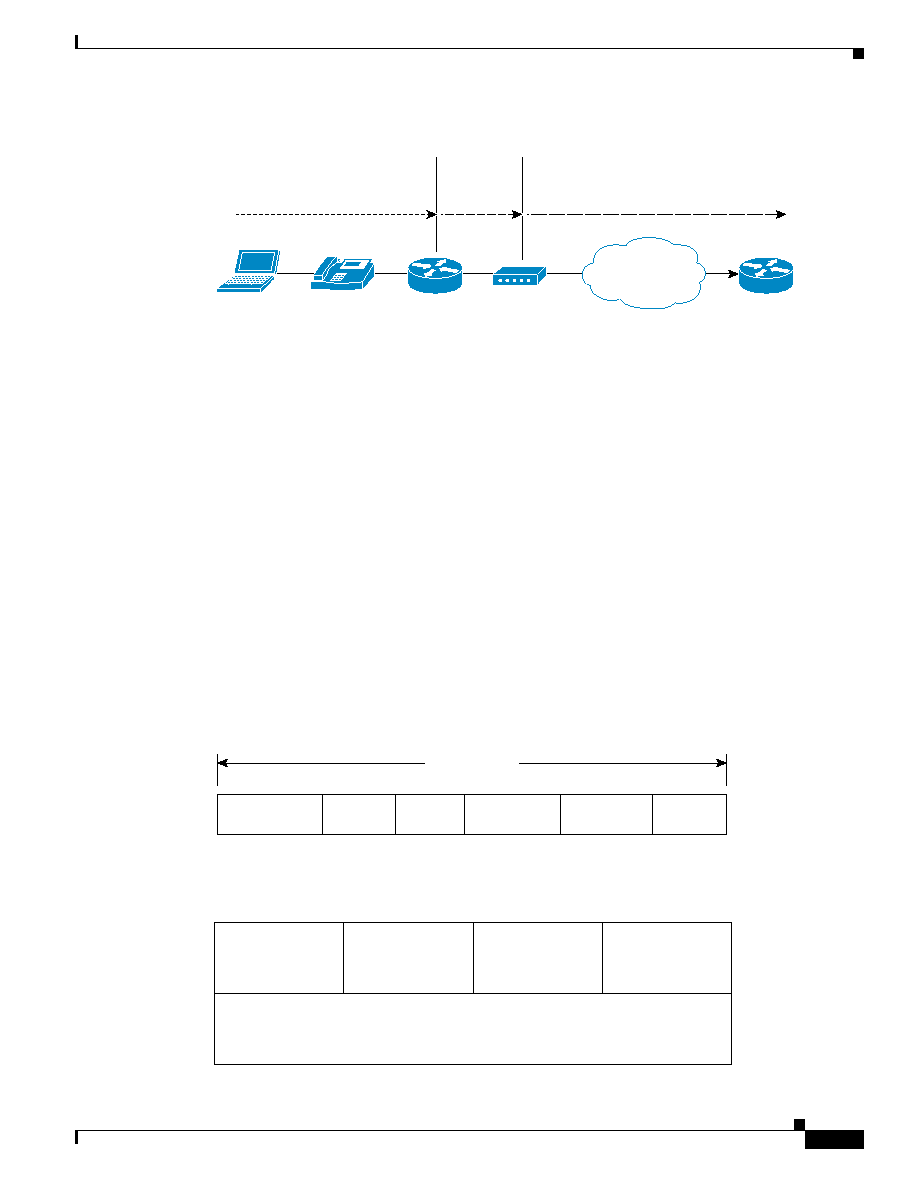
5-5
Cisco AVVID Network Infrastructure Enterprise Quality of Service Design
956467
Chapter 5 QoS in a SOHO Virtual Private Network for IP Telephony
QoS Toolset
Figure 5-2
Traffic Shaping
·
In DSL over ATM (PPPoA) environments, ATM traffic shaping per Virtual Circuit (VC) is
inherently available. No additional steps beyond defining the VC type and speed are required.
·
In DSL over Ethernet (PPPoE) environments, traffic shaping on the egress Ethernet interface of the
first QoS capable device is required.
·
In Cable environments, the Data over Cable Service Interface Specification (DOCSIS) specification
version 1.1 allows us to operate within the guaranteed rates to which the SP has agreed and is
policing.
Bandwidth Calculation
QoS is not a substitute for sufficient bandwidth. It is important to understand the exact bandwidth
requirements of the priority traffic so that links can be provisioned accordingly. For VoIP traffic in a
SOHO environment, you must consider the CODEC sample size, and the IP, UDP, RTP, and IPsec
overhead when provisioning the link (as shown in
Because of the overhead associated with the encapsulating protocols involved in an IPsec solution, the
bandwidth requirements are considerably more than one might think. For example, a G.711, or 64 Kbps,
call requires 128 Kbps of bandwidth over an ATM (PPPoA) connection.
Figure 5-3
VoIP Bandwidth Utilization Including IPsec
IP
Cisco
806/1710
3rd-party
DSL modem
To head
end
DSL
Backbone
10/100 m Ethernet
Shaped
128k Uplink
74919
74920
Voice
payload
CODEC
G.711 at 50 pps
112 kbps
114.40 kbps
127.20 kbps
G.729A at 50 pps
54.4 kbps
56.8 kbps
63.6 kbps
Plus
IP UDP RTP
and IPsec
Plus
PPP
Plus ATM cells
53b cells 48b
payload equals
RTP
Header
UDP
Header
VoIP Packet
VoIP with IPsec MLPPP over ATM
IP
Header
IPsec & GRE
Headers
Link
header
X Bytes
12 Bytes
8 Bytes
20 Bytes
76/80 Bytes
(variable)
X Bytes
